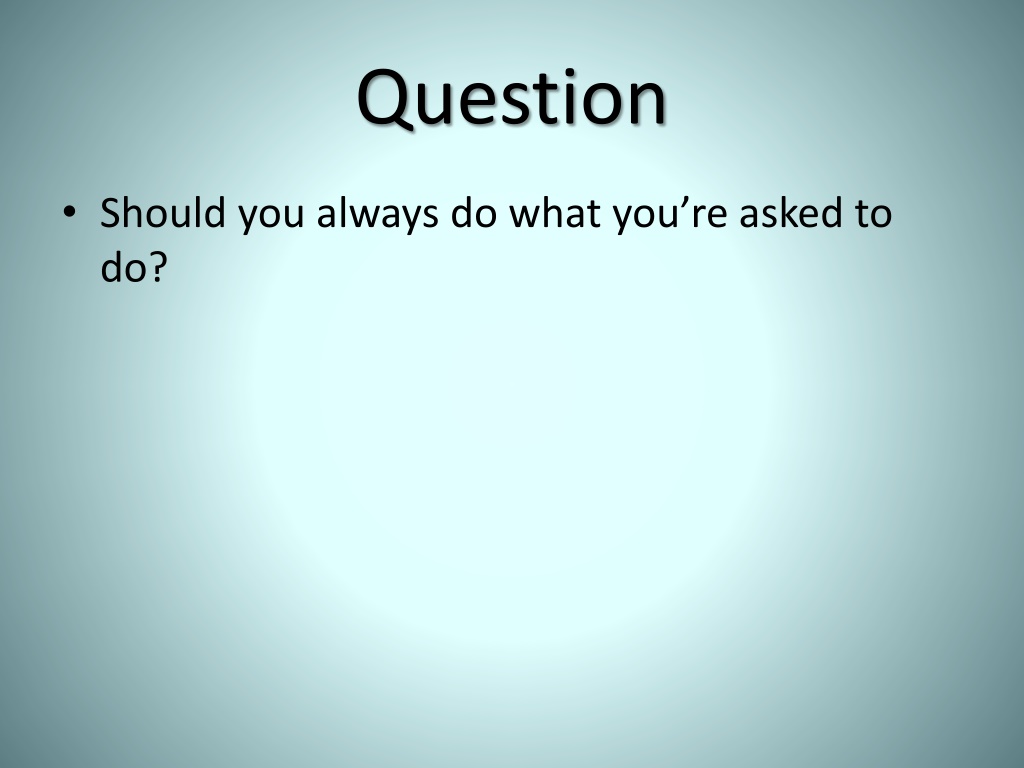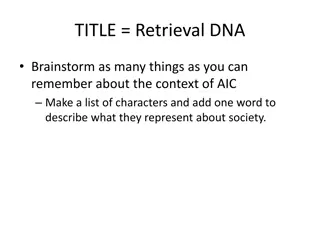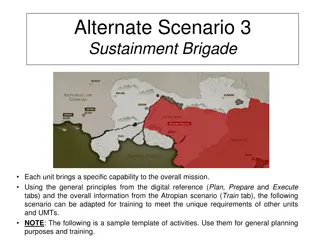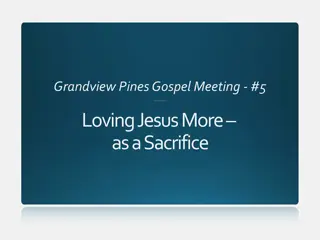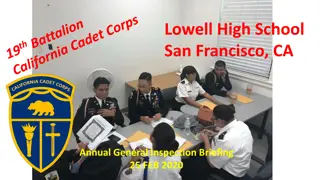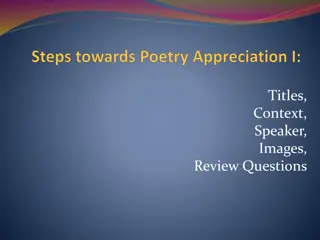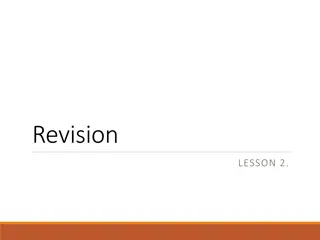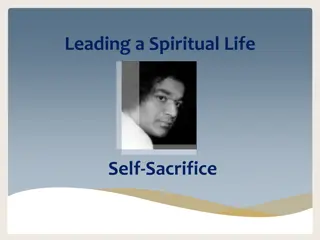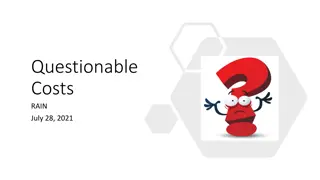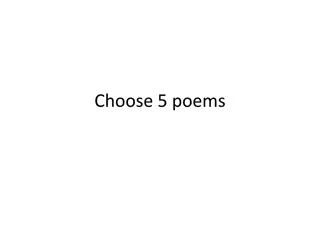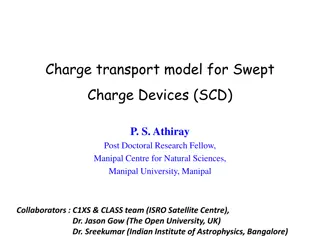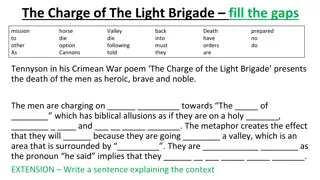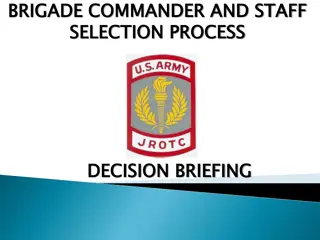The Charge of The Light Brigade: A Poem of Sacrifice and Questionable Leadership
The poem "The Charge of The Light Brigade" by Alfred Lord Tennyson reflects the tragic valor of the British Light Brigade in the Battle of Balaclava during the Crimean War. Despite a fatal mistake by their general, the soldiers obeyed orders and charged into battle, facing certain death. Tennyson's poem glorifies their sacrifice while questioning the leadership that led to their tragic fate.
Download Presentation

Please find below an Image/Link to download the presentation.
The content on the website is provided AS IS for your information and personal use only. It may not be sold, licensed, or shared on other websites without obtaining consent from the author. Download presentation by click this link. If you encounter any issues during the download, it is possible that the publisher has removed the file from their server.
E N D
Presentation Transcript
Question Should you always do what you re asked to do?
The Charge of the Light Brigade By Alfred Lord Tennyson
The poem describes the Battle of Balaclava, part of the Crimean War. A regiment of British soldiers, called the Light Brigade, who fought on horses, were ordered to charge into battle against the Russian enemy.
The General who gave the order made a mistake and was actually sending The Light Brigade on a suicide mission. The poem reflects the graphic violence of the fighting, with the noble and brave way the men went into battle, without questioning why they did so. Tennyson glorifies the Brigade, celebrating the sacrifice they made for the country. Tennyson questions the leadership of the war effort in this poem. He writes that "Someone had blundered", although he praises the soldiers for acting bravely.
Watch and listen to the poem http://www.bbc.co.uk/schools/gcsebitesize/engl ish_literature/poetry_slideshow/charge/photo player.shtml
Half a league, half a league, Half a league onward, All in the valley of Death Rode the six hundred. 'Forward the Light Brigade! Charge for the guns!' he said: Into the valley of Death Rode the six hundred. 'Forward, the Light Brigade! Was there a man dismayed? Not though the soldier knew Some one had blundered: Theirs not to make reply, Theirs not to reason why, Theirs but to do and die: Into the valley of Death Rode the six hundred.
In the poem The Charge of The Light Brigade, the poet uses repetition. In the poem The Charge of The Light Brigade , the poet uses repetition of the phrase half a league . In the poem The Charge of The Light Brigade , Tennyson uses dactylic dimeter to create rhythm. In the opening line: Half a league is repeated three times, the falling rhythm suggests the sound of the horses hooves but may also symbolise the falling (dying) soldiers.
Cannon to right of them, Cannon to left of them Cannon in front of them Volleyed and thundered; Stormed at with shot and shell, Boldly they rode and well, Into the jaws of Death, Into the mouth of Hell Rode the six hundred. Flashed all their sabres bare, Flashed as they turned in air Sabring the gunners there, Charging an army, while All the world wondered: Plunged in the battery-smoke Right through the line they broke; Cossack and Russian Reeled from the sabre-stroke Shattered and sundered. Then they rode back, but not Not the six hundred.
Cannon to right of them, Cannon to left of them, Cannon behind them Volleyed and thundered; Stormed at with shot and shell, While horse and hero fell, They that had fought so well Came through the jaws of Death, Back from the mouth of Hell, All that was left of them, Left of six hundred. When can their glory fade? O the wild charge they made! All the world wondered. Honour the charge they made! Honour the Light Brigade, Noble six hundred!
Critical terms Level 4: metaphor, ballad, imagery, repetition Level 5: ambiguity, refrain Level 6: Biblical allusion (making reference to another text) Level 7-9: dactylic dimeter , falling rhythm, satire, Key vocabulary: Quintessential - typical Satirical - mocking establishment Honour Ambiguity Refrain - repeated line(s) Dactyl - a long syllable followed by two short syllables Hierarchy Obedience Cavalry soldiers on horseback Crimean War
Check your learning Practice writing a PEE+E response to the following question: Question 1. In The Charge of the Light Brigade , how does the poet present the speaker s feelings about soldiers? [24 marks] Level 5+ try to use the shows/suggests/symbolises method of analysis For level 7+ include: dactylic dimeter , falling rhythm, satire,
In The Charge of The Light Brigade, the poet presents the speakers feelings of anger at the death of the 600 soldiers. His use of dactylic dimeter throughout the poem which creates a falling rhythm that both echoes the sound of the horses hooves as they lead the doomed charge, but may also subtly suggest the fallen soldiers themselves, when coupled with the repitition of the phrase rode the 600 the effect is to remind the reader of the number of casualties. The poet also seems to suggest his anger at the futility of war through his criticism of the leaders: someone had blundered breaks the dactylic rhythm and clearly emphasises the idea that the leaders are to be blamed.
